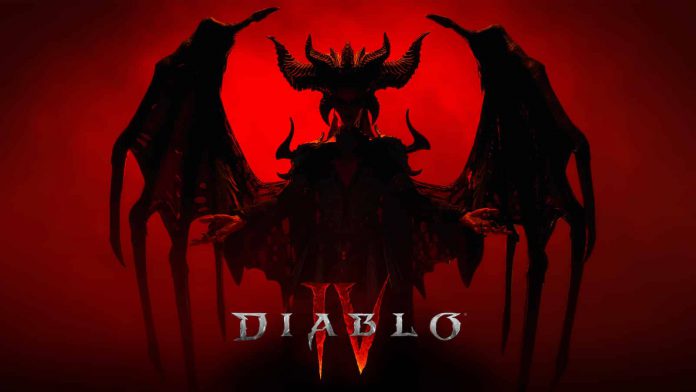Turns out our instincts were right. About a week into the full release of Diablo IV, it’s safe to say that Blizzard is back in the saddle again.
This review is coming out when it is for very similar reasons to the ones that other outlets delayed their full reviews for a little while instead of dropping them the day after launch: We still remember the absolute one-two punch disaster that was Diablo III launch week and the unveiling of the real-money auction house, one of the most spectacularly misguided attempts at monetization in the history of the video game business (which is saying something). For those too young to remember or otherwise unfamiliar, the original business model of the auction house is that you would put items that dropped in your game up for sale on a clunky, ersatz Diablo-themed eBay, sell them to the highest bidder among other players for real money, and Blizzard would take a cut of every transaction. The problem, of course, is that to incentivize using the auction house at all, the drop rates in the game itself had to be absolutely abysmal. And they were! Playing Diablo III at launch was a miserable experience that got you basically no loot and told you to go fork over five bucks at the auction house if you wanted even rare items that fit your character class, let alone your build.
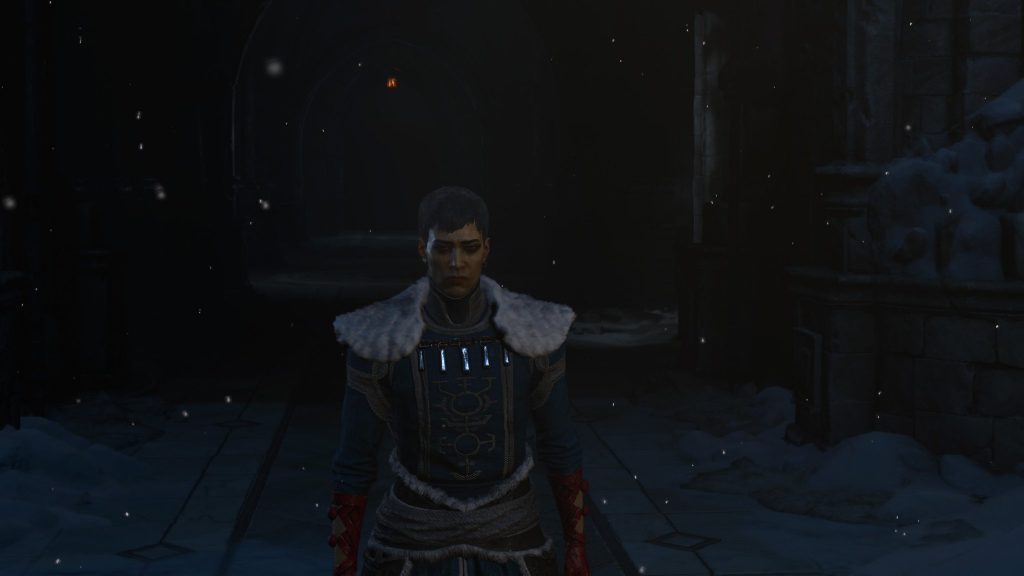
Now, the other problem with getting all your loot from the auction house in that first week is the same as the problem you had playing Diablo III in general — the servers were completely sideways. Launch night was a complete disaster during which almost no one got to play, and those that did get to play rarely stayed logged in for more than twenty minutes at a time. Eventually later in the week you were able to actually party up and play the game, more or less, but the servers still constantly booted you from groups or made you all quit, rejoin, and replay areas as you slogged through a poorly-written and fundamentally stupid story while none of the enemies you killed dropped anything worth a damn. It would take until the release of the Reaper of Souls expansion — which hit the week after the auction house finally had the plug pulled on it — and a comprehensive redesign of how loot dropped, how equipment worked, and how the game was played with the addition of Adventure Mode and seasonal content for Diablo III to become the well-regarded success it would be for the next decade.
All of this is to say, Blizzard very much knew the response they didn’t want when Diablo IV finally went live. So a whole lot of the rollout — the extended beta test period with the KFC codes, the four-day “early access” period — was both gently graduating the process of getting the player base on line to minimize the impact of everyone logging in all at once Monday night (still was a mess for a few hours) and also, of course, monetizing the hell out of it. Most people got into the closed beta through the aforementioned chicken sandwich partnership; to play the game in that “early access” period and effectively stress test their servers for launch, you had to pay an additional $20-30 extra (you also got some cosmetics and battle pass progress for doing so, but getting the game just a little bit earlier than everyone else was definitely a draw).

Diablo IV’s launch wasn’t completely stress free; there were a few down periods over launch week where the authentication processes fart out and players sit in queues for 15 minutes only to be timed out at the end of them. But the longest of those was around two hours on Tuesday afternoon and it’s been pretty smooth sailing since. As far as live service game launches go, this has to be considered a fairly unqualified success — especially since per a Blizzard press release last Thursday, Diablo IV is now the fastest-selling game in the history of the company (would love to know what #2 is, and how deeply if at all they had to massage that stat to make it true, but that’s neither here nor there).
How’d they do it? Well, the game looks amazing, feels amazing to play, and has a compelling story hook that’s a new spin on an iconic IP. We can take those in order. The review of the beta covered a lot in detail the factual ins and outs of why Diablo IV looks so good, but the fantastically framed vistas and great mud puddles (I’m serious, the mud puddles in this game around mid-day are fantastic; the best I’ve ever seen realized in a video game) find their basis in a perfect understanding by the design team of what actually needs to look good in a high-angle, fixed iso camera loot game like this. It’s not the character models; they look fine, but there’s a reason that non-engine cinematics are back for this title beyond just being a staple of the franchise; the few times we do get a close up on, say, Lorath outside the desert palace in Act III, it’s very clear that while these models are perfectly acceptable and not outright ugly, they’re meant to be regularly seen from a remove and usually in motion. It’s not the textures, either; other reviewers have reported that if you’re willing to jump through the hoops to get the Battle.net client on your Steam Deck, Diablo IV will run fine and look great on there even without the high definition texture pack, which is a purely optional install on the PC version of the game.

The game makes all its graphical hay on lighting and particle effects — the way light works in general, from sunlight on those muddy puddles to torches and flames in the dark of night — and it does it with a degree of success I haven’t seen from a title since Witcher 3. Combine that with a great artist’s eye to what makes a good background, from framing to content, and despite the intentionally dour color palette this is the best looking Blizzard game in quite some time. I might be tempted to say since Diablo II, which was also hardly cutting-edge graphically on its release in 2001 but was such a triumph of aesthetics that an entire generation of gamers fell in love with it, including I suspect many of the people who worked on Diablo IV. As for the color situation, Diablo III still exists and you can still go play it; the servers are staying online. And maybe in 10 years there will be a fifth Diablo game that calls back to how that title looked and played.
Because Diablo IV also significantly and self-consciously steps away from how the previous game in the series plays as a game, at least now in its final state. Perhaps the main embodiment of the change in design philosophies can be found in how the game handles resources. In Diablo III, life (game mechanical life, the hit points in your big red orb) was as easily gained as it was lost — life regen, life on kill, life on hit, and +life affixes were common on items starting with the first round of item drops in the very first map section of the game. Life potions started as a resource of which you could buy as many as you wanted in town and eventually got streamlined out to a healing ability on a cooldown that was just stylized as a potion. And in addition to all that, red life orbs constantly dropped in the environment to give your characters spot healing. Gaining and losing life was so trivial that there were entire character builds built off of spending it like any other resource. Not the case in Diablo IV, which strictly constrains resource sprawl of all kinds but puts especially stringent limitations on life: instead of any of the four powerful item affixes above, the only one I’ve run into on items with any regularity is a slow regen effect that applies itself only you haven’t taken damage for awhile; it helps you conserve potion use between fights, but once you’re in a serious fight and taking hits, it’s not going to help you out. Speaking of potions, gone is the previous configuration as an ability — potions are back to being counted, tracked items and you can only hold a certain limited number at a time. This turns boss fights into such obvious wars of attrition and races between damage dealt and health regained that there’s a new, related mechanic: serious bosses have pips on their health bar marking certain thresholds of life lost, and the first time you get their life below one of the pips, the boss drops potions. Use them wisely, because there’s a decent chance those are the only potions you’ll get the entire fight.
There have been similar constraints put on e.g. mana and rage and the other boutique, class-based spenders, but it’s life where the changes are most pronounced and most impactful. The idea is to get away from how Diablo III ended up at the end of its lifecycle — a very low-friction game that was perfect to listen to podcasts to while leveling up, because it more or less played itself — and turn the experience into something far more immediate, challenging, and most importantly demanding of your attention. Broadly speaking it has succeeded in doing this, and has done it in a pretty elegant way.
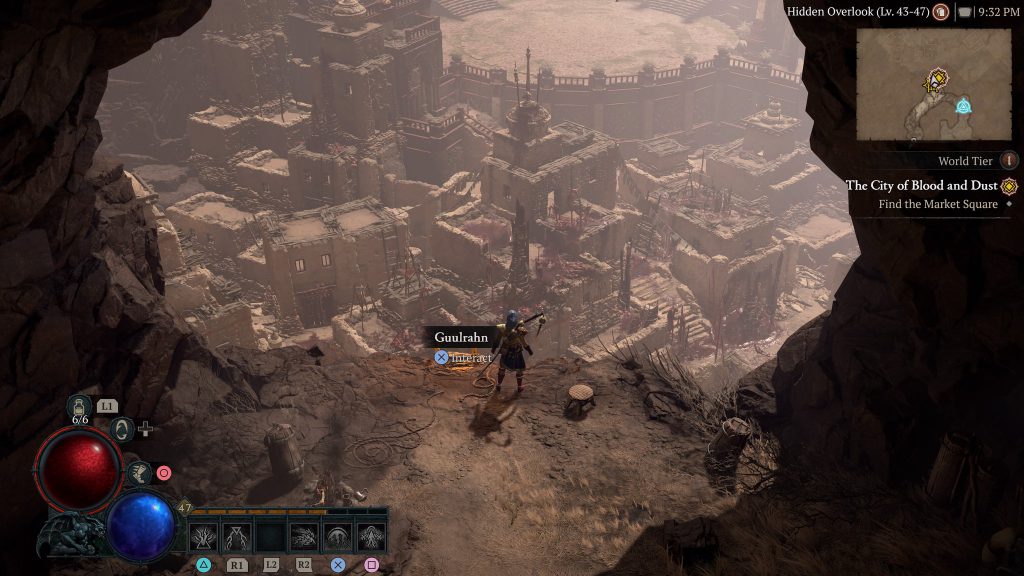
The story and aesthetics of Diablo IV are once again a value-add to the title, which is a nice return to form. I’ve said a lot of nice or at least tolerant and understanding things about Diablo III so far; it is a game I’ve sunk at least 600 hours into, after all. All of that ends at the doorstep of that game’s plot and story. A disastrous offering in a string of disastrous offerings all showrun by Chris Metzen, who spent his entire career out of his depth and somehow wouldn’t be removed from his post after this embarrassment. Instead he would continue to helm Blizzard’s biggest creative enterprises through the end of the Starcraft II trilogy, one of the most embarrassing and expensive narrative failures in the medium. We don’t need to go into depth here; the comprehensive failures of Diablo III’s narrative and the game attempt by the Reaper of Souls expansion to try (and fail) to salvage it could be its own article. Suffice it to say that the Diablo IV team had their work cut out for them.
The way they triaged the franchise after the previous entry’s failure was pretty simple: ignore it in every way except the literal lore and characters, and position this game as the spiritual and aesthetic sequel to Diablo II. This review is spoiler-free both because it’s gonna be long enough as it is without detailed plot descriptions and because I haven’t actually finished the game yet, but at what appears to be a bit over two-thirds of the way through the story, Diablo IV feels and acts a lot more like the desperate, deeply pessimistic vanguard action of the second game than the third’s melodramatic personal journey of another one of Chris Metzen’s boilerplate corrupt Magical Girls. The world of Sanctuary is back to having the dangerous, dour, evil feel the second game did, too. Don’t get me wrong, every game in this series is about trading in extremely broad gory genre pulp; both Diablo II and Diablo III were fundamentally about killing a whole bunch of monsters and not thinking especially deeply about the moral implications. It’s not like the third title dumbed down a really high-concept franchise. But Diablo III was slathered in so much goofy schtick, man. It was an entire game of comedy bits that weren’t funny. Some of it was racist, like Covetous Shen and everything about the Witch Doctor. (Guess which previous Diablo class-faction doesn’t get mentioned by name in Diablo IV, unlike the Barbarians, Crusaders, and Druids, despite you stomping around their home turf?) A lot of it, though, was just dumb. Every goofy quest involving the Khazra braying in comedy caveman voice? Just dumb. Everything that came out of the Scoundrel companion’s mouth? Just dumb. Every single time Tyrael did yet another canned bit about having to learn to eat or poop or sleep? Dumb, dumb, dumb! If you’re gonna do schtick, you have to have the chops to do schtick! Diablo IV rejects schtick pretty much in its entirety, and is much better off for it.
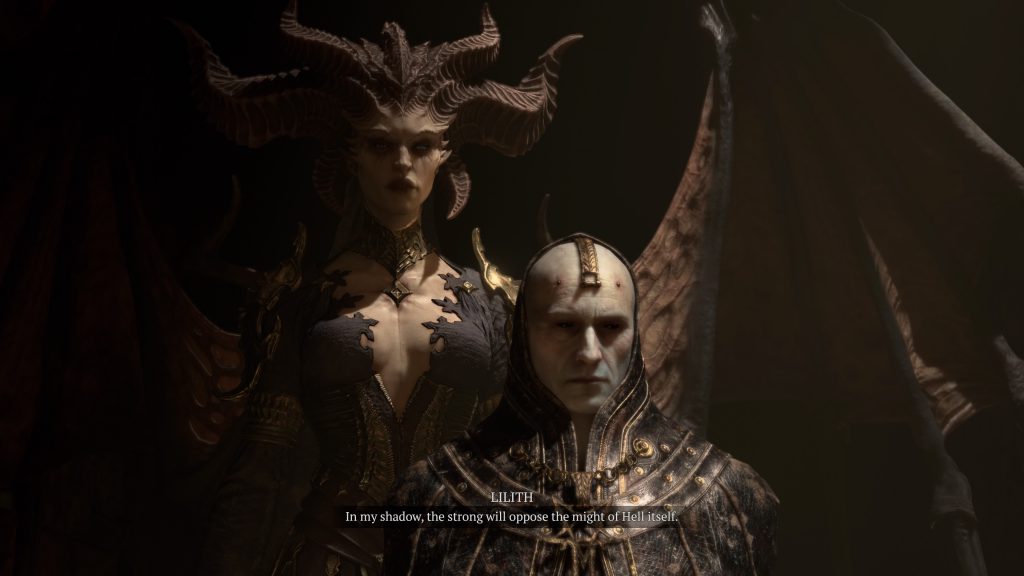
Even without comparing it to the previous title, since that’s just a flat-out slam dunk, Diablo IV is simply a well-written video game. I don’t necessarily mean well-plotted, because I hear the plot kind of meanders into some doldrums near the very end and doesn’t wrap up all that well, which is no surprise because this is a live-service game now and it will be getting some kind of semi-regular content additions. But it is well-written. Outside of a handful of Collect 10 Potatoes fetch quests, the sidequests are character-driven and a number of them are fully-fleshed out quest chains that tell entire little stories, like bottle episodes of a television show. And not all of them — in fact, far fewer of them than I expected — end with the quest giver dying a cruel, senseless and/or ironic death because Sanctuary is inimical to human life! Now don’t get me wrong, a lot of them do. But while the “right” way to play this game is to rush the story on your first character and then backfill the sidequests at your leisure once you’ve unlocked all the systems, I’ve found myself enjoying the side stuff so much I’ve hit the level cap and started on the paragon grid somewhere in the middle of Act IV.
That brings us to the downsides of the game, and the biggest one is that yeah, this is a live service game now because every game with a development budget this huge is a live service game now, and it distorts what should be an excellent Diablo experience, the best one in the franchise, into something that’s merely very good. This has nothing to do with the previously-discussed always online requirement or the game’s monetization; the former is just a fact of life now, and the latter is shockingly reserved (for the time being), limited solely to cosmetics in both the cash shop and the battle pass. This has to do with the basic structural merits of the game and the vibes you get from them. The game has mounts, for instance. They’re there for two reasons: first and foremost, they’re something to entice you to spend money on playing dress up. But second, the open world of Diablo IV — which encompasses over half of the eastern continent of the entire realm of Sanctuary — is really, really big, and filled with a whole lot of monsters. Crossing it takes a really long time. Doing so in anything resembling a timely fashion requires something like a horse.
But you don’t get the horse until after completing the first three acts! Bizarrely, you need an NPC to go “ah crap, we forgot to give you a horse, go on down and ask the stablemaster for one” instead of just being able to buy one from the vast stores of coin you certainly have on your person by then. Luckily, you only have to do it with one character for every character to unlock the mount moving forward (even brand new ones, which sort of messes up the dramatics of the intro, but you’re probably skipping it anyway after the first playthrough). This is because they want you slowly and methodically plodding through the world until that point in the game with only the waypoints between towns (which are very spread out, and which don’t help with new exploration) to help you in moving about…which is not really how the MMO side of this game, and make no mistake this game is at least half-MMO in its lineage, wants you to handle things. If you do it like I did and meander about, you’ll level cap halfway through the story.
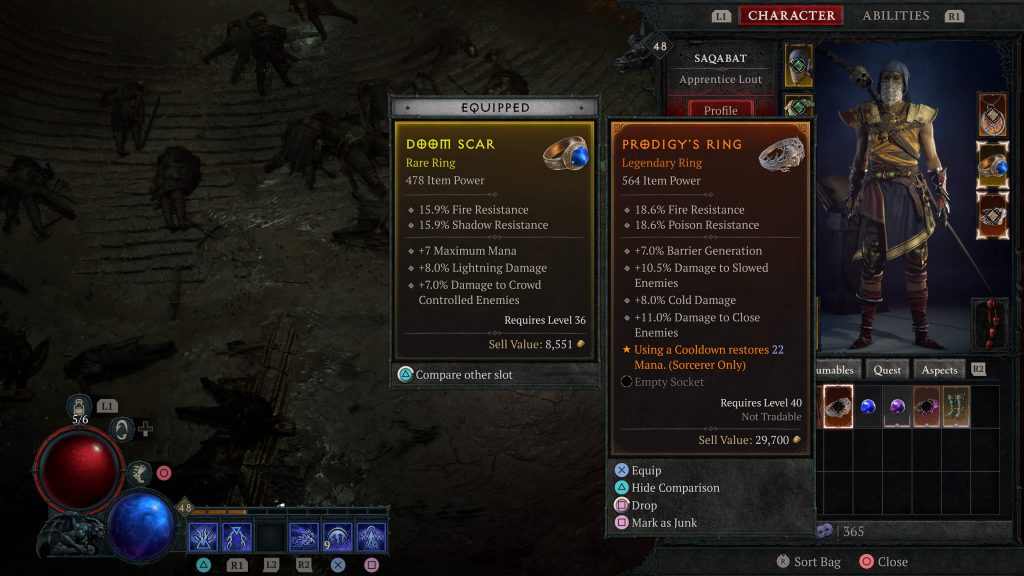
Another MMO thing: bosses in general are no joke and require active, attentive management of your potions and your positioning. Optional stronghold bosses you find out in the world that don’t gate plot progression, though? These guys get downright irritating. They’re tough, sure, but demonstrating mastery in the fight by learning the boss’s tells and counters isn’t really the issue; it’s that for whatever reason, either to make the game more challenging for hardcore players or to heavily incentivize partying up, these bosses have ridiculous amounts of life, especially on World Tier II (Veteran). Both World Tier I and World Tier II are unlocked for new characters, and this is not a situation like in Diablo III where the actual properly balanced starting difficulty is the third one but no one tells you. World Tier II is an enjoyable challenge for levels 1-20, and then enemies keep leveling to match your level while item drops start to stagnate between levels 20-25 unless you start moving into the post-Act III zones, because while enemies level to your character, item drop levels seem to be soft capped by what region you’re in. Soon you find yourself not putting out enough damage to kill pretty much anything in a reasonable amount of time, and that’s not good difficulty; that’s go-away difficulty. If it’s taking me 45 seconds to clear a simple trash mob and almost 10 minutes to clear a difficult boss, it’s clearly not a skill issue but a numbers issue. My advice? Don’t feel bad in the slightest about keeping the game on World Tier I until you beat the story, and then only put the game on World Tier II for the precise amount of time that it takes you to beat the dungeon that unlocks World Tier III. That third difficulty setting immediately jumps the loot table up to parity with your character level; all World Tier II does is jack up the difficulty for the same drops with a moderate XP and gold boost.
And as much as I’ve talked up the character writing in this game, there is one place they’ve fallen notably flat: you, the big cheese, the main character, the Wanderer. Haven’t had the time to put in lengthy runs with anyone but my sorcerer yet but I would be shocked if there’s much variation between the various classes when it comes to the main character script; there certainly wasn’t in Act I, which I ran through with every class during the beta. Their reaction to events and participation in conversations is so passive and perfunctory it’s more irritating and off-putting than if the Wanderer was simply a classic silent protagonist. At least then I could imagine my sorcerer having a witty reply, a whiny complaint, or literally any kind of character reaction at all. But no, regardless of who you’re playing, the Wanderer is a withdrawn, quiet, dour figure of few words and even fewer apparent motivations. As of Act IV it is deeply unclear why this character hates the Prime Evils so much and why they are so opposed to Lilith; they will, however, occasionally offer up that both those things are true. If they said nothing, it would be taken as a given that I, the player, was responsible for inventing that for myself, even if that meant deciding they were simply a tulpa devoid of all motive thought, passion, or desire except for making Number go Up. But no, this Wanderer definitely has some kind of character; they’re just not very interested in sharing it. Yes, it’s a lot of extra writing to do to make up six bespoke character scripts; yes it sort of boxes players in as to their motivations. So does this! This half-way answer saves work but serves no one. Maybe future content updates will backfill some of this; adding class-specific quest chains that are more in-depth than the incredibly perfunctory class mechanical unlocks seems like a pretty slam-dunk source of future content.
Final Verdict:
All in all I’m very pleased with the game, though. Very rare that I go this long on a game I don’t like (though it has happened before; looking at you, Bloober Team). It deserves to be the mega-hit that it is, though it’s probably not gonna be anyone’s Game of the Year. If they take this seriously and build it out the way Bungie has built out Destiny, they could have a very long term hit on their hands. It’ll be interesting to see how the financial incentives fall for them moving forward.
Have any questions or feedback? Drop us a note in the comments below or email us at contact@goonhammer.com.
